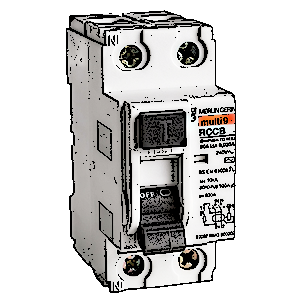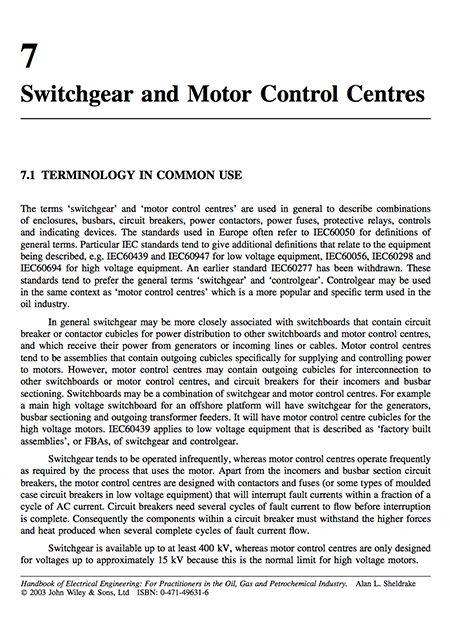Difference Between Elcb And Mcb Pdf
Home / Technical Articles / Energy and Power / What is the difference between MCB, MCCB, ELCB. What is the difference between Earth Leakage.
Table of Contents. Circuit breakers are installed and used for safety purposes in both residential as well as commercial and industrial areas. In power distribution, we need circuit breakers at different levels. Depending on the current carrying capacity, breaking capacity and other functions, we select a suitable circuit breaker according to our needs i.e. VCB, MCCB and then MCB, this is common hierarchy being followed in power distribution system. Main Difference between MCB and MCCB. Also read: What is MCB?
MCB:. MCB stands for “Miniature Circuit Breaker”. Rated current under 100 amps. Interrupting rating of under 18,000 amps. trip characteristics may not be adjusted. Suitable for low current circuits (low energy requirement), i.e.
Generally, used where normal current is less than 100 Amps. What is MCCB? MCCB:.
MCBB stands for “Molded Case Circuit Breaker”. Rated current in the range of 10-2500 amps. Thermal operated for overload and & Magnetic operation for instant trip in SC (Short circuit conditions). Interrupting rating can be around 10k – 200k amps. Suitable for high power rating and high energy i.e. Commercial and industrial use. Generally, used where normal current is more than 100 Amps.

Should I go for MCB or MCCB? Now the question is that for a situation, where standard current carrying capacity needed is 100A with breaking capacity of 15KA, what should be used? An MCB or an MCCB? We assume cost is not very different. Both are in moulded case and having almost similar features especially when we are comparing with fixed thermal setting option of MCCB and they are classified as low voltage circuit breakers. For magnetic setting, we can select MCB as per curve and MCCB will have either fixed setting or can be adjusted.
So what is the criteria to make a selection of MCB or MCCB? Space can be a point of consideration as MCBs are more compact but it doesn’t make a big point as bigger size of MCCB brings many advantages too like better fault clearing mechanism. Keep in mind that both MCB & MCCB are low voltage circuit breakers and created to respond to IEC 947 standards (We are going to discuss these standards below) Actually there is difference in standards they follows. An MCB is supposed to function in accordance to IEC 60898-1 (Unless mentioned otherwise) and so is tested accordingly.
While an MCCB is tested in accordance with IEC60947-2. So to understand the difference between MCB and MCCB we need to get a brief idea of these two standards. Difference between IEC 60898-1 and IEC 60947-2 IEC60898-1: It defines behavior of circuit breaker having rated operational voltage not exceeding than 440V (between Phases), Rated current not exceeding than 125A (We have range 0.5A-125A) and rated short circuit capacity not exceeding than 25KA ( Usually it is 10KAin MCB). This is designed for unskilled user (or say uninstructed user) and for devices not being maintained consequently.


Difference Between Elcb And Rccb
Also pollution degree covered is zero pollution to maximum pollution (degree 2). These are the circuit breakers we find in residential homes, shops, school & offices electrical distribution switchboards.
IEC60947-2: This standard applies to circuit-breakers, the main contacts of which are intended to be connected to circuits, the rated voltage of which does not exceed 1000 V a.c. Or 1500 V d.c.; it also contains additional requirements for integrally fused circuit-breakers. It covers very high range of standard current carrying capacity (We have range of 6A-6300A) and meant for skilled user. The device is also supposed to be maintained properly. Also pollution degree is to be 3 or more. These circuit breakers are industrial applications and protect the power distribution of up to 1000 volts AC. And 1500 volts DC.
(For MCBs, MCCBs & ACBs) So it is clear that these items are different in their fundamentals. An MCB designed for indoor, pollution-free conditions and would not be suitable for harsh, outdoor applications that require pollution degree 3. Typically, IEC 60898-1 certified Circuit Breakers meet minimally required performance to proof proper protection of household installations: Pollution degree 2, impulse voltage 4kV, isolation voltage is the same as nominal voltage 440V. That is the reason why usually we meet limited number of technical information printed on Circuit Breakers. It is not necessary that Circuit breakers certified with IEC 60898-1 can’t be certified with IEC 60947-2, but for sure any manufacturer need to obtain certification. Rating of same MCB can be different for different standards, so, it is highly recommended to check the data properly printed on it.
So, the application and needs will decide that which device is to be used or selected. Comparison Between IEC 69896-1 & IEC 60947-2 MCB Characteristic IEC 60898-1 IEC 60947-2 Rated Current: In 6 – 125A 0.5 – 160A SC Breaking Capacity.